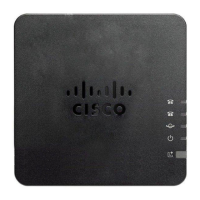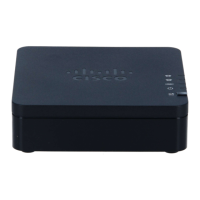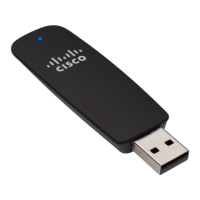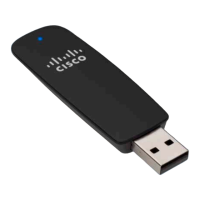2-3
Cisco ATA 190 Analog Telephone Adaptor Administration Guide for SIP (Version 1.0)
OL-31821-01
Chapter 2 Preparing to Install the ATA 190 on Your Network
Understanding Phone Configuration Files
Understanding Phone Configuration Files
Configuration files for a phone are stored on the TFTP server and define parameters for connecting to
Cisco Unified
Communications Manager. In general, any time you make a change in Cisco
Unified
Communications Manager that requires the phone to be reset, a change is automatically made
to the phone’s configuration file. If the system needs to reset or restart, both ports must reset or restart
at the same time.
Configuration files also contain information about which image load the phone should be running. If this
image load differs from the one that is currently loaded on a phone, the phone contacts the TFTP server
to request the required load files. (These files are digitally signed to ensure the authenticity of the file
source.)
In addition, if the device security mode in the configuration file is set to Authenticated and the CTL file
on the phone has a valid certificate for Cisco
Unified Communications Manager, the phone establishes
a TLS connection to Cisco
Unified Communications Manager. Otherwise, the phone establishes a
TCP/UDP connection. For SIP phones, a TLS connection requires that the transport protocol in the
phone configuration file be set to TLS, which corresponds to the transport type in the SIP Security
Profile in Cisco Unified Communications Manager.
If you configure security-related settings in Cisco Unified Communications Manager Administration,
the phone configuration file will contain sensitive information. To ensure the privacy of a configuration
file, you must configure it for encryption. For detailed information, see
Configuring Encrypted Phone
Configuration Files in Cisco Unified Communications Manager Security Guide.
A phone accesses a default configuration file named XMLDefault.cnf.xml only when the phone has not
received a valid Trust List file containing a certificate assigned to the Cisco Unified Communications
Manager and TFTP.
If auto registration is not enabled and you did not add the phone to the Cisco Unified Communications
Manager database, the phone does not attempt to register with Cisco Unified Communications Manager.
If the phone has registered before, the phone accesses the configuration file named
ATA < mac_address>.cnf.xml, where mac_address is the MAC address of the phone.
• Configuration Files:
–
For unsigned and unencrypted files—ATA<mac>.cnf.xml
–
For signed files—ATA<mac>.cnf.xml.sgn
–
For signed and encrypted files—ATA<mac>.cnf.xml.enc.sgn
• Dial Plan—<dialplan>.xml
–
Support “,” for second dial tone
–
No support > for configuring termination key
–
No support + dial pattern which contains + will be ignored
–
Maximum number of dial pattern is 10
–
Maximum length of each dial pattern is 30
The filenames are derived from the MAC Address and Description fields in the Phone Configuration
window of Cisco
Unified Communications Manager Administration. The MAC address uniquely
identifies the phone. For more information see the Cisco Unified Communications Manager
Administration Guide.

